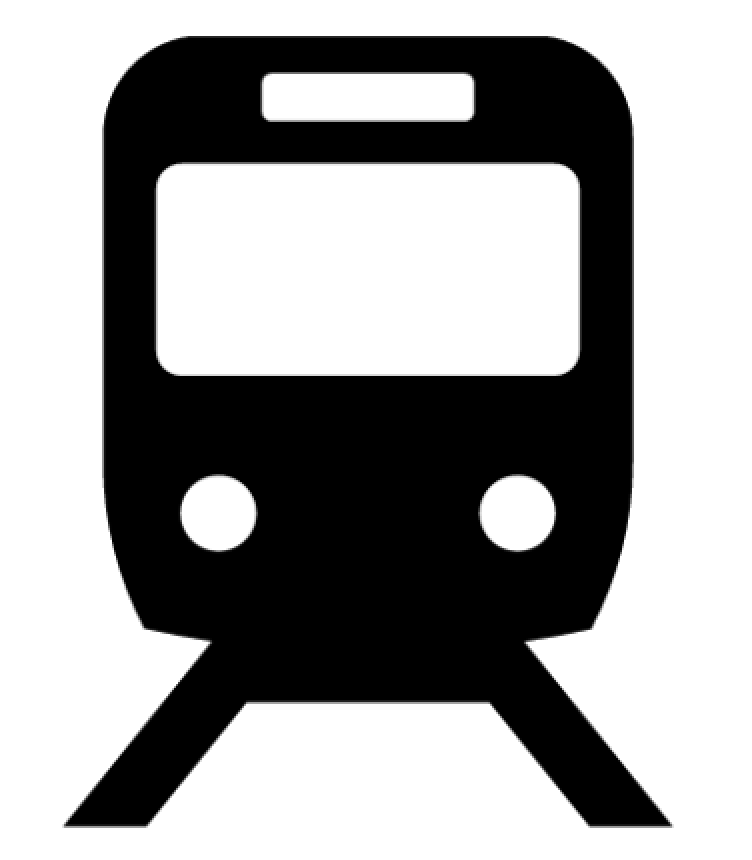|
grahame
|
 |
« Reply #45 on: August 14, 2020, 14:12:35 » |
|
The other thing is that the operator has only been operating these types of traction for a year and a half, with no prior experience in HST▸ operation. I don't want to speculate as it's wrong to do so, but there is likely to be a number of factors which could have lead to this accident.
"I don't want to speculate" but you and perhaps others are getting so close to speculation that it could be seen as such. We don't know. The RAIB▸ are collecting evidence ... here is what they write (the link in the previous post) We are currently collecting evidence needed to identify factors relevant to the cause of the accident and its consequences. The scope of the investigation is likely to include:
* the sequence of events and the actions of those involved
* the operating procedures applied
* the management of earthworks and drainage in this area, including recent inspections and risk assessments
* the general management of earthworks and drainage and associated procedures designed to manage * the risk of extreme weather events
* the behaviour of the train during, and following the derailment
* the consequences of the derailment and a review of the damage caused to the rolling stock
* underlying management factors
* actions taken in response to previous safety recommendations |
|
|
|
|
 Logged
Logged
|
Coffee Shop Admin, Chair of Melksham Rail User Group, TravelWatch SouthWest Board Member
|
|
|
|
grahame
|
 |
« Reply #46 on: August 14, 2020, 14:41:06 » |
|
The BBC» reports An off-duty rail worker walked a mile to raise the alarm after surviving the train derailment which killed three people, it has emerged.
Driver Brett McCullough, conductor Donald Dinnie and passenger Christopher Stuchbury died in the incident near Stonehaven on Wednesday.
Two investigations have begun into the derailment, believed to have been caused by a landslip after heavy rain.
Prince Charles is visiting the area to thank the emergency services.
He met some of those who were among the first on the scene of the crash on Friday morning.
Transport Secretary Michael Matheson told BBC Scotland's The Nine that a "number of actions" were taken after the derailment to raise the alarm.
He said: "There was a call made by someone who believed that an incident had taken place locally and they contacted Police Scotland.
"There was also an off-duty railway person on the train who, after it derailed, walked around a mile to the next signal box and advised them that an incident had occurred, which allowed Network Rail at its national control centre to close the line.
|
|
|
|
|
 Logged
Logged
|
Coffee Shop Admin, Chair of Melksham Rail User Group, TravelWatch SouthWest Board Member
|
|
|
|
broadgage
|
 |
« Reply #47 on: August 14, 2020, 15:12:17 » |
|
This tragedy does in my view make a strong case for supplying satellite telephones to operational rail staff in remote locations.
It is most unlikely that any reliable cellphone signal was available, but a satellite phone works anywhere. Had the of duty rail worker had a satellite phone they could have summoned help WITHOUT a long walk in challenging conditions.
Had the driver and conductor possessed satellite phones, this might not have helped in THIS case as both lost their lives, but could be most helpful in similar situations.
In case of fatal accident, I would consider it acceptable to go through the belongings of the deceased in search of their satellite phone to summon help.
Fatal accidents are now exceedingly rare, but satellite phones are also most useful in case of serious delay or breakdown, without risk to life.
|
|
|
|
|
 Logged
Logged
|
A proper intercity train has a minimum of 8 coaches, gangwayed throughout, with first at one end, and a full sized buffet car between first and standard.
It has space for cycles, surfboards,luggage etc.
A 5 car DMU▸ is not a proper inter-city train. The 5+5 and 9 car DMUs are almost as bad.
|
|
|
|
Phantom
|
 |
« Reply #48 on: August 14, 2020, 16:04:15 » |
|
This tragedy does in my view make a strong case for supplying satellite telephones to operational rail staff in remote locations.
It is most unlikely that any reliable cellphone signal was available, but a satellite phone works anywhere. Had the of duty rail worker had a satellite phone they could have summoned help WITHOUT a long walk in challenging conditions.
Had the driver and conductor possessed satellite phones, this might not have helped in THIS case as both lost their lives, but could be most helpful in similar situations.
In case of fatal accident, I would consider it acceptable to go through the belongings of the deceased in search of their satellite phone to summon help.
Fatal accidents are now exceedingly rare, but satellite phones are also most useful in case of serious delay or breakdown, without risk to life.
Surely a satellite phone would only have been supplied to working crew not someone off duty? Possibly this person (and the local person who reported the accident) saved many other lives by getting the line shut and no other train to run into this scene |
|
|
|
|
 Logged
Logged
|
|
|
|
|
broadgage
|
 |
« Reply #49 on: August 14, 2020, 17:54:49 » |
|
If satellite phones were issued, I would expect that they would be issued to each relevant employee, as with other equipment, and therefore that a worker en-route to or from work would have it with them.
The train involved in this accident was PROBABLY protected by the signalling system, but it is unwise to totally rely on this.
|
|
|
|
|
 Logged
Logged
|
A proper intercity train has a minimum of 8 coaches, gangwayed throughout, with first at one end, and a full sized buffet car between first and standard.
It has space for cycles, surfboards,luggage etc.
A 5 car DMU▸ is not a proper inter-city train. The 5+5 and 9 car DMUs are almost as bad.
|
|
|
|
IndustryInsider
|
 |
« Reply #50 on: August 14, 2020, 18:01:49 » |
|
That’s a lot of expensive satellite phones to issue our for a very unusual situation.
Both power cars would have GSM-R▸ fitted and that is supposed to work wherever the train is on the network (including within tunnels), and other places a normal phone wouldn’t work.
The front power car was obviously unavailable, but an emergency stop message could have been sent from the rear power car if circumstances permitted it. That reaches other trains in the area as well as the controlling signaller so is a much quicker way of stopping trains than using a phone.
|
|
|
|
|
 Logged
Logged
|
To view my GWML▸ Electrification cab video 'before and after' video comparison, as well as other videos of the new layout at Reading and 'before and after' comparisons of the Cotswold Line Redoubling scheme, see: http://www.dailymotion.com/user/IndustryInsider/ |
|
|
|
southwest
Guest
|
 |
« Reply #51 on: August 14, 2020, 19:35:11 » |
|
That’s a lot of expensive satellite phones to issue our for a very unusual situation.
Both power cars would have GSM-R▸ fitted and that is supposed to work wherever the train is on the network (including within tunnels), and other places a normal phone wouldn’t work.
The front power car was obviously unavailable, but an emergency stop message could have been sent from the rear power car if circumstances permitted it. That reaches other trains in the area as well as the controlling signaller so is a much quicker way of stopping trains than using a phone.
Surely instead of satellite phones as similar system to aircraft with a crash sensor would be a better option. |
|
|
|
|
 Logged
Logged
|
|
|
|
|
Electric train
|
 |
« Reply #52 on: August 14, 2020, 20:15:51 » |
|
That’s a lot of expensive satellite phones to issue our for a very unusual situation.
Both power cars would have GSM-R▸ fitted and that is supposed to work wherever the train is on the network (including within tunnels), and other places a normal phone wouldn’t work.
The front power car was obviously unavailable, but an emergency stop message could have been sent from the rear power car if circumstances permitted it. That reaches other trains in the area as well as the controlling signaller so is a much quicker way of stopping trains than using a phone.
That is supposing the member of railway staff knew how to use the GSM-R phone. The GSM-R phone remained working in the crash, there have been a couple of incidents where the equipment has stopped working in derailments. Given the weather conditions and the fact the train had been reversed because of the flooding, the signaller would have been come concerned of the trains safety after a period of time and would have tried to contact the drive with no response would have contacted the MOMs▸ to check the route. There is no simple solution to contacting a train involved in a derailment in such a remote location, thankfully in the UK▸ even our remotest locations on the railway network are not that remote from civilisation |
|
|
|
|
 Logged
Logged
|
Starship just experienced what we call a rapid unscheduled disassembly, or a RUD, during ascent,”
|
|
|
|
IndustryInsider
|
 |
« Reply #53 on: August 15, 2020, 00:53:30 » |
|
That is supposing the member of railway staff knew how to use the GSM-R▸ phone. The GSM-R phone remained working in the crash, there have been a couple of incidents where the equipment has stopped working in derailments.
Yes, that's the suggestion I am making - all railway staff to be given instructions on how to use the GSM-R in an emergency situation. It only involves pressing two buttons at the most. You'll never cover every eventuality - and in the case of this particular crash it may have made no difference at all, but it would surely be unusual for no cabs on the train to be accessible following an incident? Certainly a better solution IMHO▸ than dishing out loads of satellite phones. |
|
|
|
|
 Logged
Logged
|
To view my GWML▸ Electrification cab video 'before and after' video comparison, as well as other videos of the new layout at Reading and 'before and after' comparisons of the Cotswold Line Redoubling scheme, see: http://www.dailymotion.com/user/IndustryInsider/ |
|
|
|
paul7575
|
 |
« Reply #54 on: August 15, 2020, 13:42:54 » |
|
That is supposing the member of railway staff knew how to use the GSM-R▸ phone. The GSM-R phone remained working in the crash, there have been a couple of incidents where the equipment has stopped working in derailments.
Yes, that's the suggestion I am making - all railway staff to be given instructions on how to use the GSM-R in an emergency situation. It only involves pressing two buttons at the most. You'll never cover every eventuality - and in the case of this particular crash it may have made no difference at all, but it would surely be unusual for no cabs on the train to be accessible following an incident? Certainly a better solution IMHO▸ than dishing out loads of satellite phones. How about a g-force sensor that sends an instant Emergency message? Could that be made reliable enough to avoid false alarms? Paul |
|
|
|
|
 Logged
Logged
|
|
|
|
|
Electric train
|
 |
« Reply #55 on: August 15, 2020, 13:55:34 » |
|
That is supposing the member of railway staff knew how to use the GSM-R▸ phone. The GSM-R phone remained working in the crash, there have been a couple of incidents where the equipment has stopped working in derailments.
Yes, that's the suggestion I am making - all railway staff to be given instructions on how to use the GSM-R in an emergency situation. It only involves pressing two buttons at the most. You'll never cover every eventuality - and in the case of this particular crash it may have made no difference at all, but it would surely be unusual for no cabs on the train to be accessible following an incident? Certainly a better solution IMHO▸ than dishing out loads of satellite phones. How about a g-force sensor that sends an instant Emergency message? Could that be made reliable enough to avoid false alarms? Paul A more practical solution would be constant data comms between train and shore. An intermediate stage between the current ETCS▸ level 1 and a level 2 with full in cab signalling. The train would report its position, speed, etc via GSM-R to the signaller as an enhancement to the existing interlocking and train describer systems |
|
|
|
|
 Logged
Logged
|
Starship just experienced what we call a rapid unscheduled disassembly, or a RUD, during ascent,”
|
|
|
|
IndustryInsider
|
 |
« Reply #56 on: August 15, 2020, 15:36:33 » |
|
Both of those ideas are potentially good ones. As ever though it will come down to the practicalities of cost. With just one isolated incident happening, and just one passenger death, I would be surprised if such measures were introduced.
Should another, worse, incident happen then perhaps.
|
|
|
|
|
 Logged
Logged
|
To view my GWML▸ Electrification cab video 'before and after' video comparison, as well as other videos of the new layout at Reading and 'before and after' comparisons of the Cotswold Line Redoubling scheme, see: http://www.dailymotion.com/user/IndustryInsider/ |
|
|
|
Bmblbzzz
|
 |
« Reply #57 on: August 15, 2020, 19:24:46 » |
|
A question asked by someone else, elsewhere, but which might mind find an answer here: As we drove past the rail replacement buses parked near ABZ railway station this arvo, a thought occurrred to me, which was, how do they move all those prone carriages from such an inaccessible place? Does such a thing as a crane train exist? (I'm thinking a crane that runs on rails). |
|
|
|
|
 Logged
Logged
|
Waiting at Pilning for the midnight sleeper to Prague.
|
|
|
|
grahame
|
 |
« Reply #58 on: August 15, 2020, 19:40:02 » |
|
A question asked by someone else, elsewhere, but which might mind find an answer here: As we drove past the rail replacement buses parked near ABZ railway station this arvo, a thought occurrred to me, which was, how do they move all those prone carriages from such an inaccessible place? Does such a thing as a crane train exist? (I'm thinking a crane that runs on rails). I recall there used to be several of them (out of use?) at Swindon in the yard that was taken over by the High Output OHLE▸ train. Not sure these days. http://www.bluebell-railway.co.uk/bluebell/wagon/rs1083.html is perhaps a not untypical crane from Ramsome and Rapier - lift capacity about 45 tons. And HST▸ power car is out 70 tones and in olden days 2 cranes were used. A mark 3 carriage is about 33 tons. Big issue is the lean / possibly of topple over when swung across rather than along the track. |
|
|
|
|
 Logged
Logged
|
Coffee Shop Admin, Chair of Melksham Rail User Group, TravelWatch SouthWest Board Member
|
|
|
|
MVR S&T
|
 |
« Reply #59 on: August 15, 2020, 19:54:23 » |
|
The power car and burnt coach are I expect write offs, so bit like this then: https://www.youtube.com/watch?v=MHGN1OAvlVkClass 66 was cut up on site. Access via the road used by the bridge repaires. |
|
|
|
|
 Logged
Logged
|
|
|
|
|





